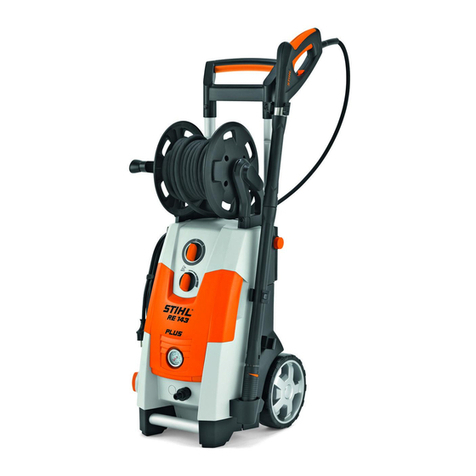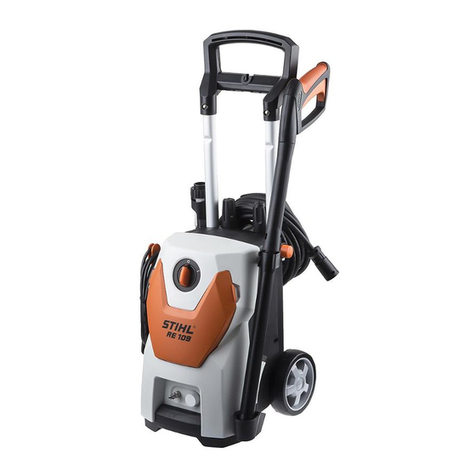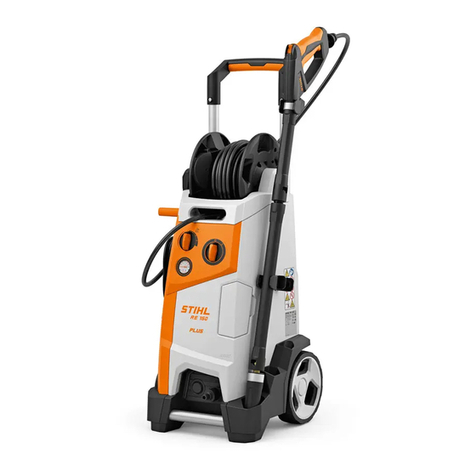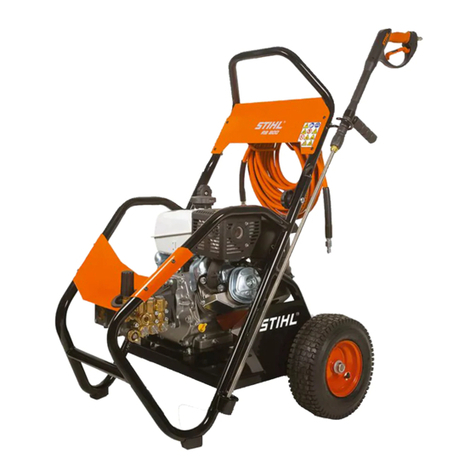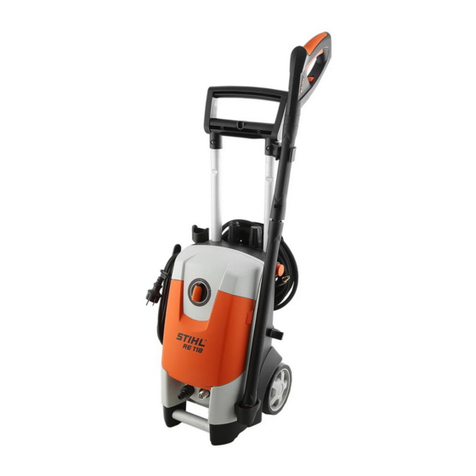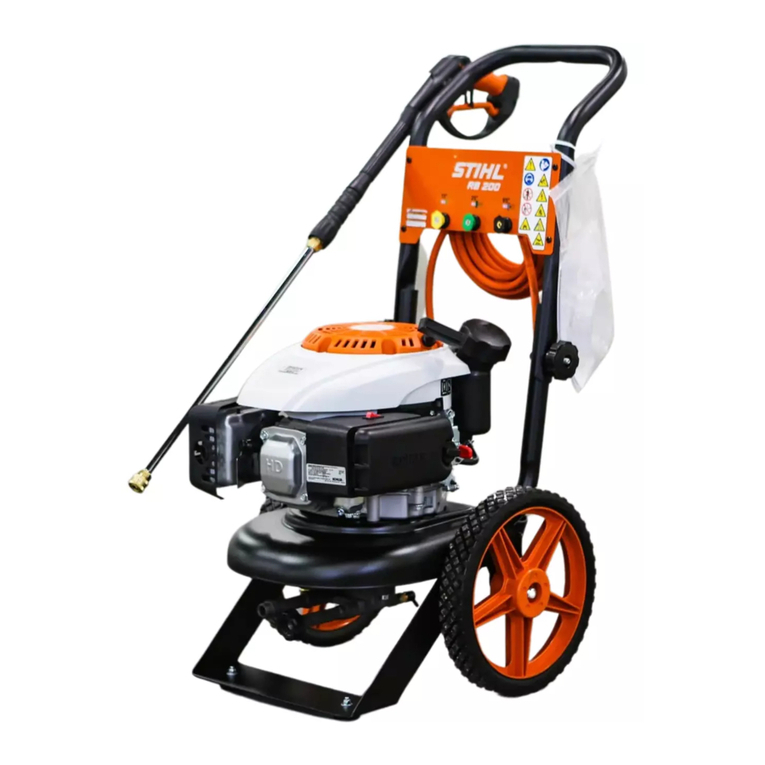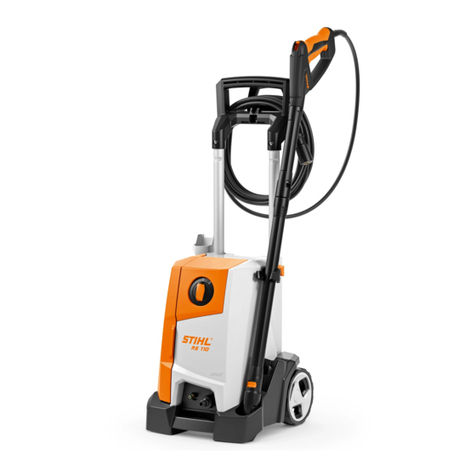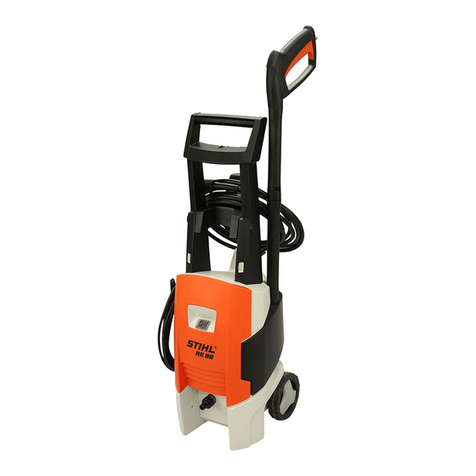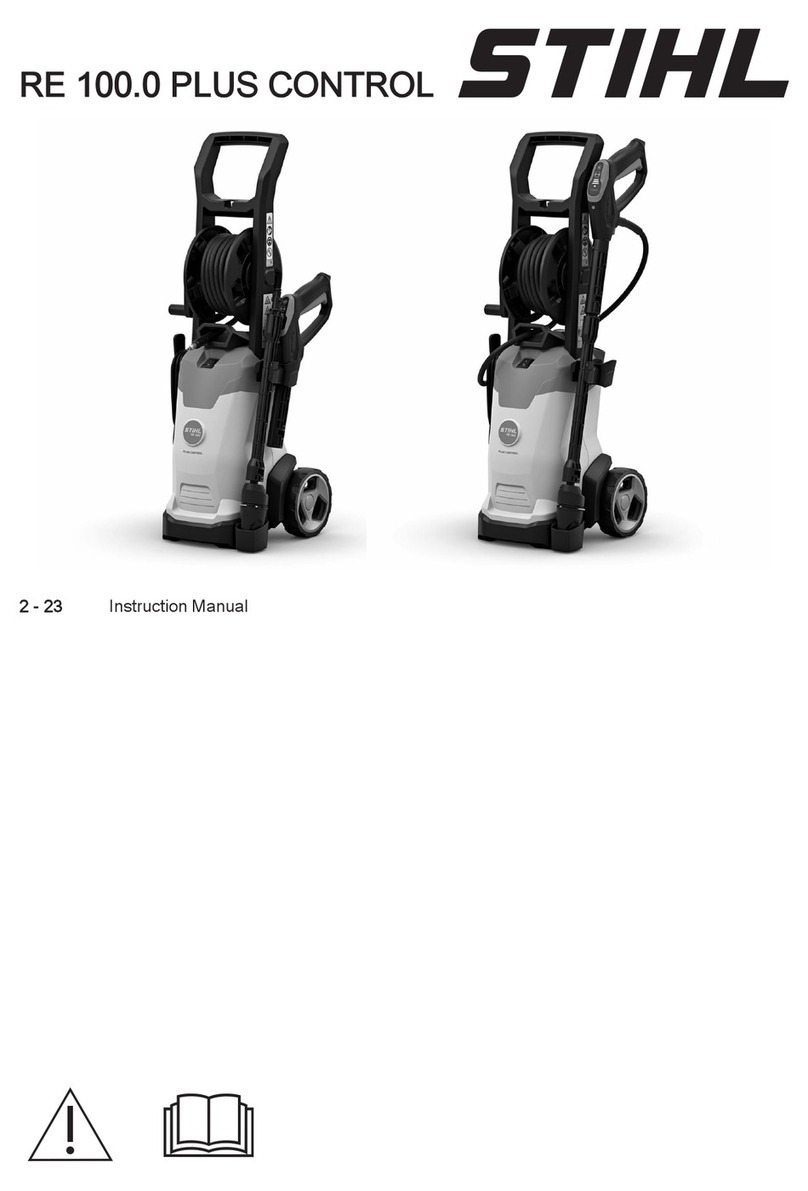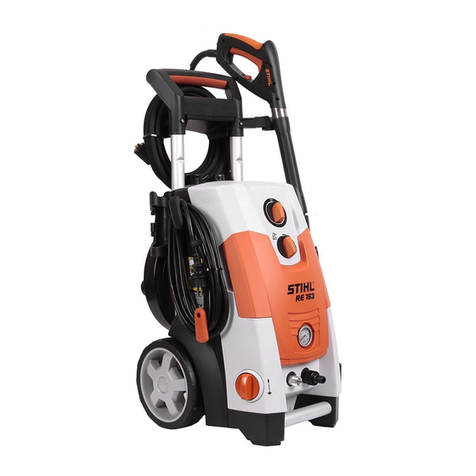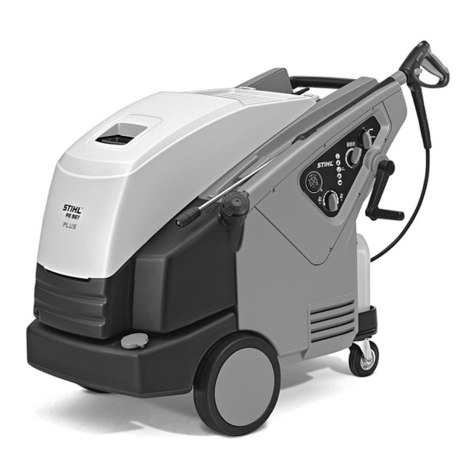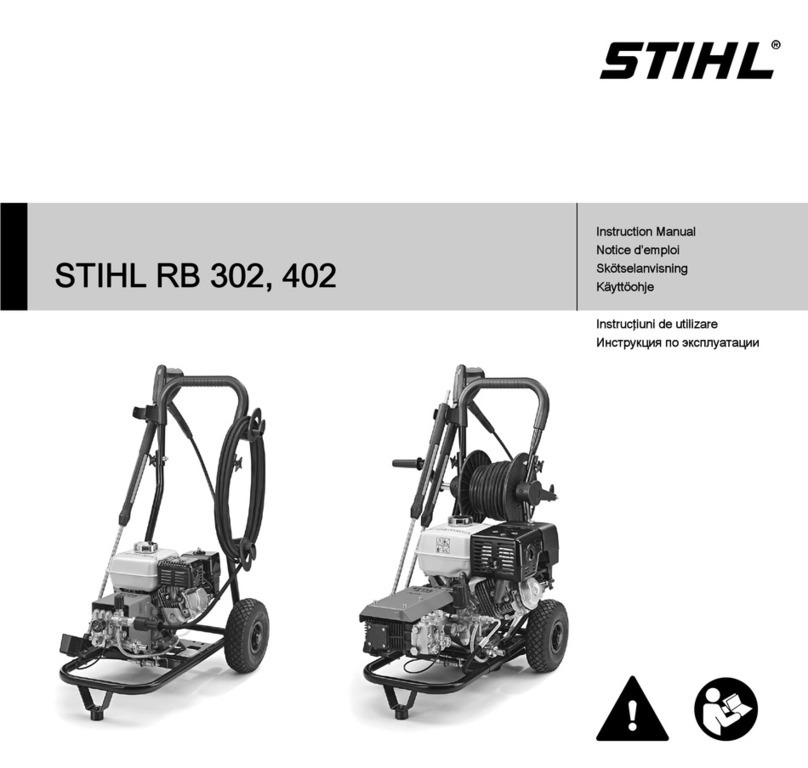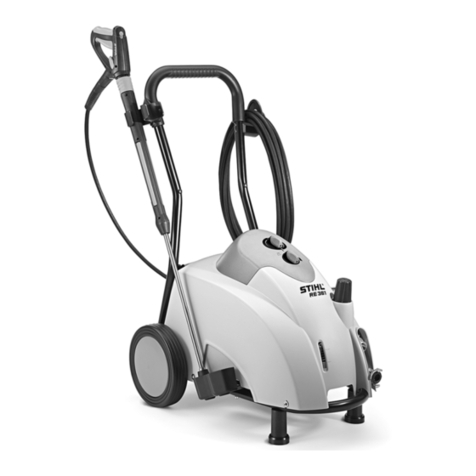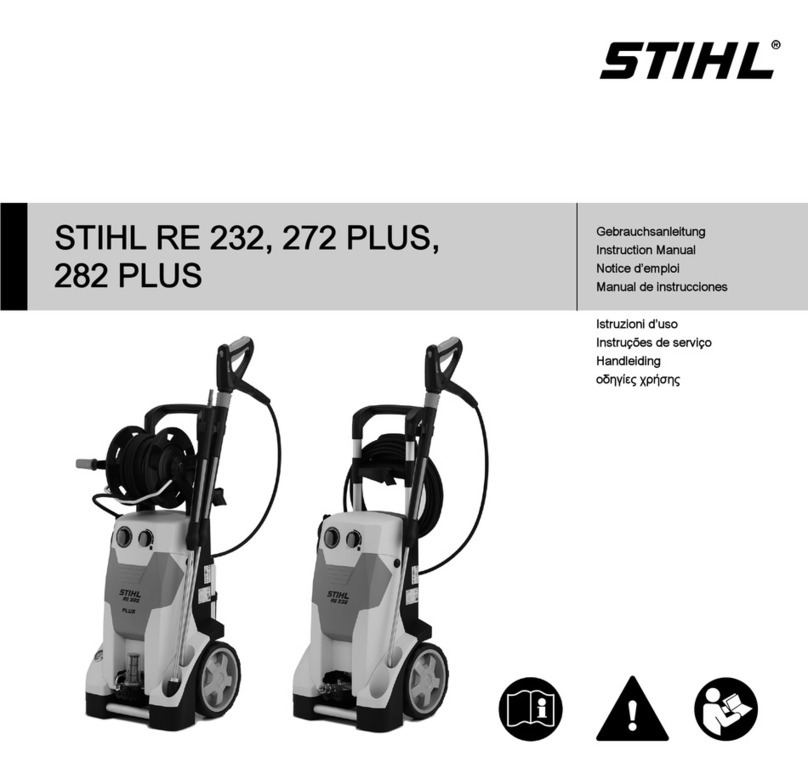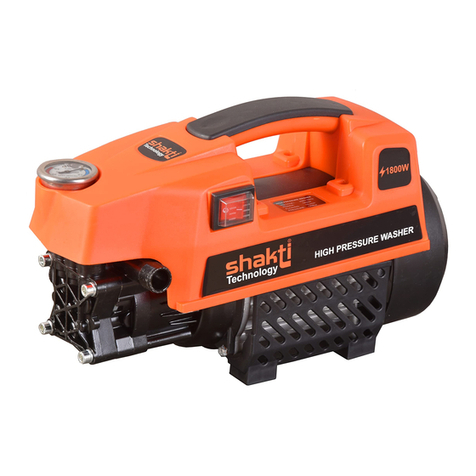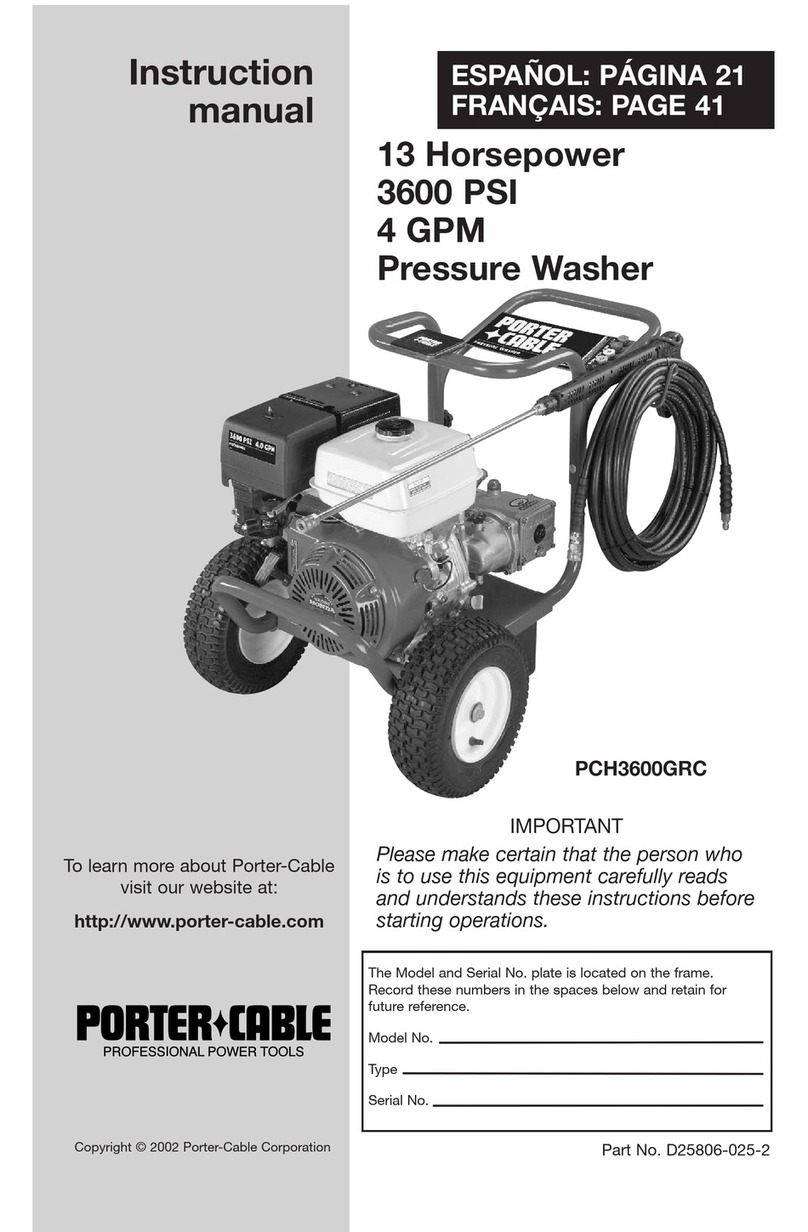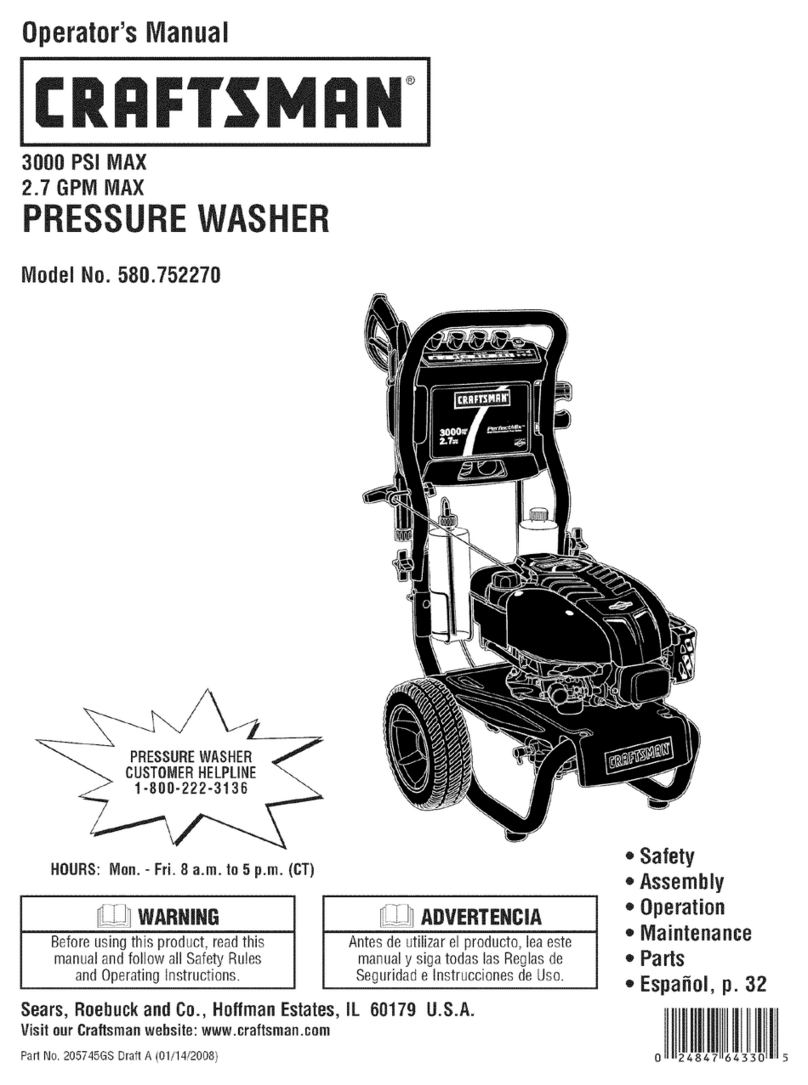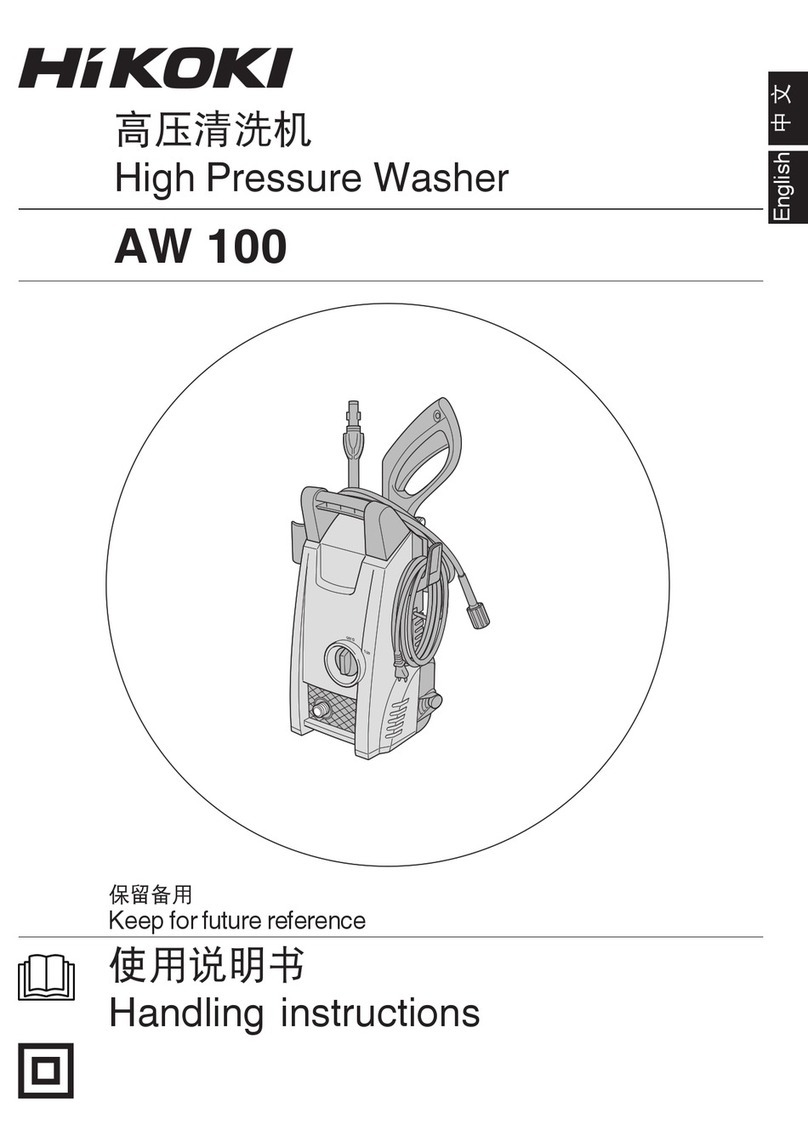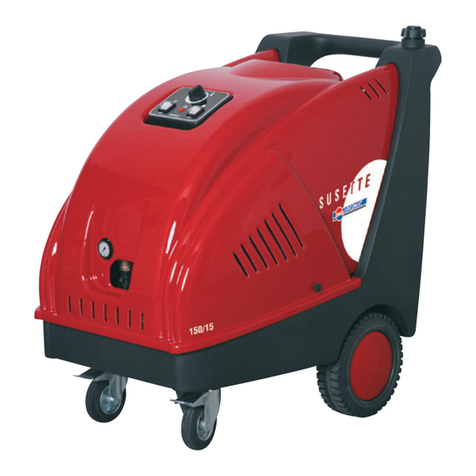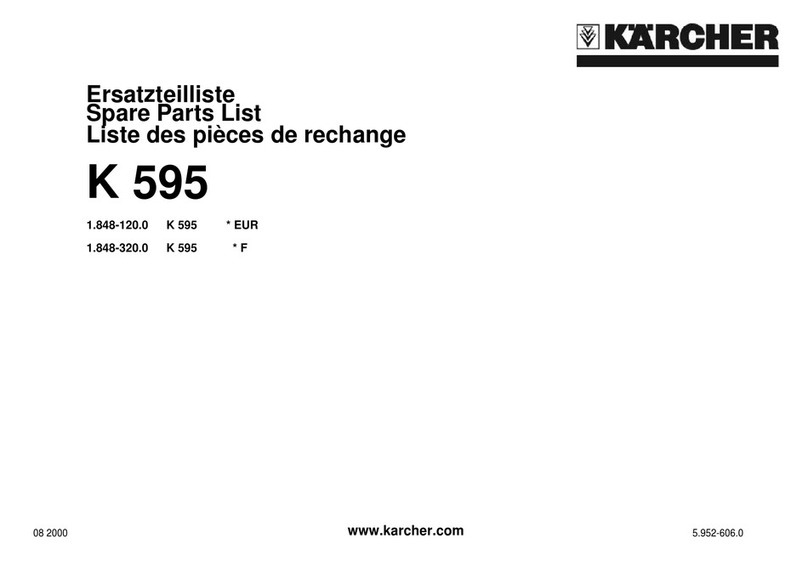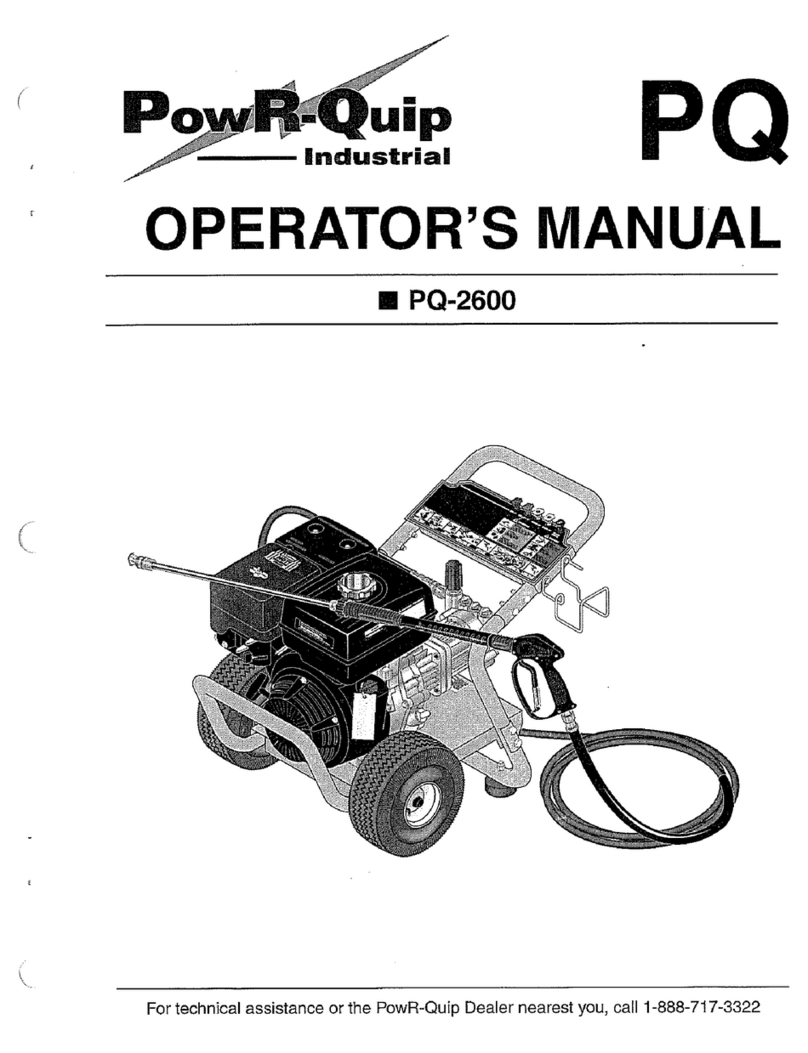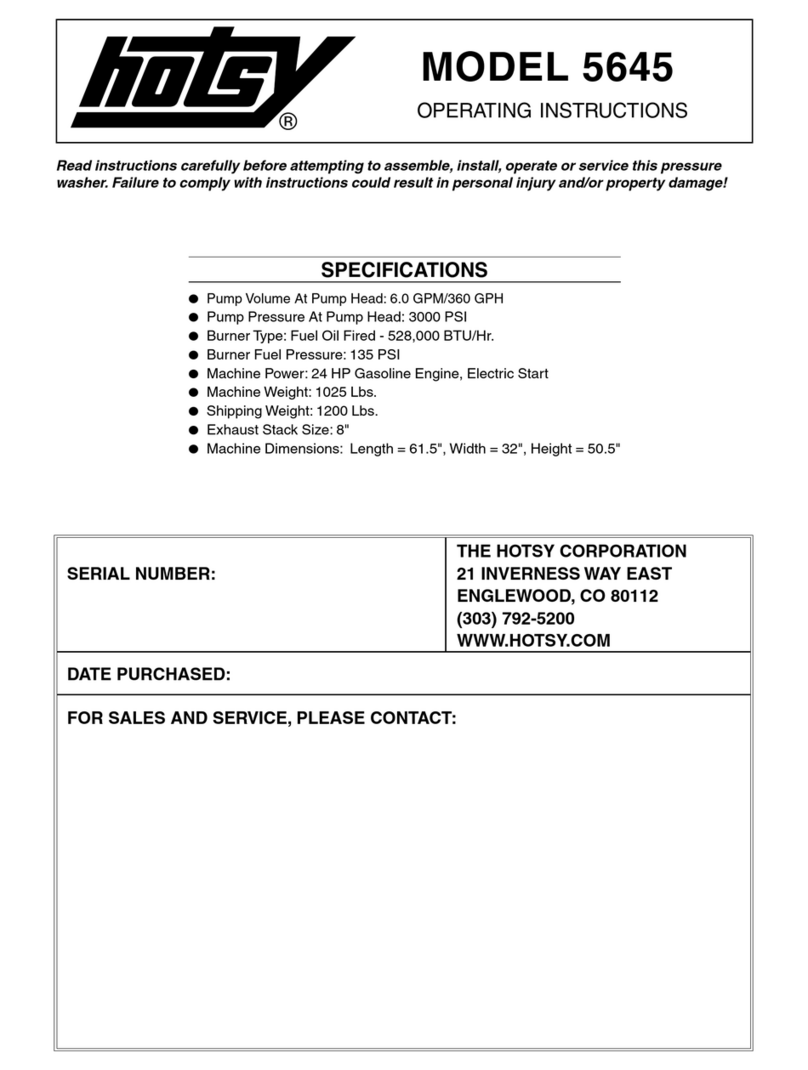
high-pressure washer is then in stand-by
mode and is still switched on. If the spray gun
trigger is squeezed, the high-pressure pump
switches on again automatically and water
flows out of the nozzle. This may result in seri‐
ous injury to people and damage to property.
►When not operating the machine: Lock the
spray gun trigger.
► Switch off the high-pressure washer.
► Unplug the mains plug of the high-pressure
washer from the socket.
■ At temperatures below 0° C water can freeze
on the surface to be cleaned and in the com‐
ponents of the high-pressure washer. The
user may slip, fall and be seriously injured.
Damage to property may occur.
►Do not use the high-pressure washer at
temperatures below 0° C.
■ Pulling on the high-pressure hose, water hose
or connecting cable can cause the high-pres‐
sure washer to move and topple over. Dam‐
age to property may occur.
►Do not pull on the high-pressure hose,
water hose or connecting cable.
■ If the high-pressure washer is placed on a
sloping, uneven or soft surface it may move
and topple over. Damage to property may
occur.
►Place the high-pressure washer on a hori‐
zontal, flat, hard surface.
■ If working at a height, the high-pressure
washer or the spray attachment may fall to the
ground. This may result in serious injury to
people and damage to property.
►Use a lift bucket or secure scaffolding.
► Do not place the high-pressure washer in a
lift bucket or on scaffolding.
► If the high-pressure hose does not have
sufficient reach: Extend the high-pressure
hose by connecting a high-pressure hose
extension.
►Secure the spray attachment so that it can‐
not fall.
■ The water jet may detach asbestos fibers from
surfaces. Asbestos fibers may spread through
the air after drying and be breathed in. Breath‐
ing in asbestos fibers can be harmful to health.
►Do not clean surfaces containing asbestos.
■ The water jet may remove oil from vehicles or
machinery. The oily water may enter the soil,
the water system or the drains. That would
create an environmental hazard.
►Vehicles or machinery should only be
cleaned at places where there is an oil trap
in the water drain.
■In combination with leaded paint the water jet
can form leaded aerosols and leaded water.
Leaded aerosols and leaded water may enter
the soil, the water system or the drains. Inhal‐
ing aerosols can be harmful to health and trig‐
ger allergic reactions. That would create an
environmental hazard.
►Do not clean surfaces that are painted or
lacquered with leaded paint.
■ The water jet can damage sensitive surfaces.
Damage to property may occur.
► Do not clean sensitive surfaces with the
rotary nozzle.
► Sensitive surfaces made of rubber, fabric,
wood and similar materials should be
cleaned at a lower operating pressure and
from a greater distance.
■If while in use the rotary nozzle is immersed in
dirty water and then operated, the rotary noz‐
zle may be damaged.
►Do not use the rotary nozzle with dirty
water.
► If cleaning a container: Empty the container
and allow the water to flow away while
cleaning it.
■Easily combustible and explosive liquids that
are sucked in can cause fires and explosions.
Persons may be seriously or fatally injured
and property may be damaged.
►Do not suck in or spread easily combustible
or explosive liquids.
■ Drawing in irritant, corrosive and toxic liquids
can endanger health and damage components
of the high-pressure washer. Persons may be
seriously or fatally injured and property may
be damaged.
►Do not suck in or spread irritating, caustic
or toxic liquids.
■ The strong water jet can seriously injure peo‐
ple and animals and cause damage to prop‐
erty.
► Do not direct the water jet at
people and animals.
► Do not direct the water jet at places that are
not fully visible.
► Do not use the water jet to clean clothing
while wearing it.
► Do not use the water jet to clean shoes or
boots while wearing them.
4 Safety Precautions English
0458-664-0101-A 7



